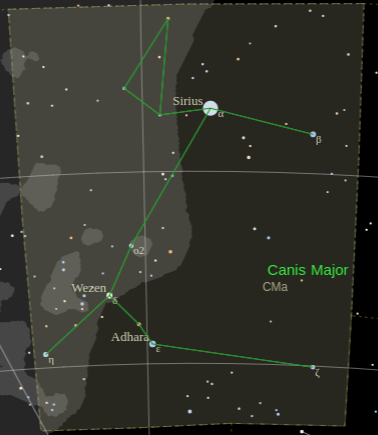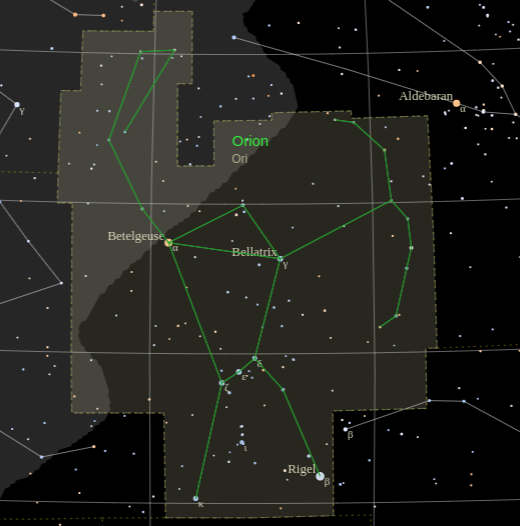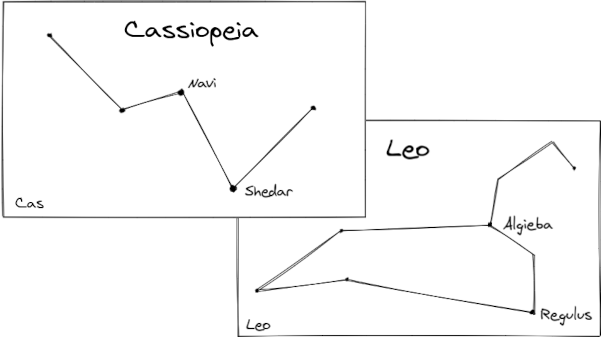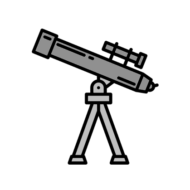With today’s telescope technology you can buy a smart telescope with a built in GPS and object database that can track objects across the sky. With one of these telescopes all you need to do is get it aligned, then just punch in the name, or catalog number, for the object you want to look at and it will find it and track it for you. It’s really fun to do this, I do it all the time… However, where is the fun in that if you don’t know anything about the sky or the objects you’re looking at? Amateur astronomy is much more than just punching in some object name, it’s all about learning where things are and how they work, and why they are the way they are. Amateur astronomy is all about learning and discovery! This article will help you to get started.
Where to start?
Since you are reading this you might have some interest in astronomy, if you are interested, and if you’re just getting started where should you start? First I’ll tell you what not to do! Don’t go out and buy a telescope, at least not yet. There are a few things you should do first!
Start Learning the Constellations
It’s really important that you become familiar with the night sky, and the best way to do that would be to first start learning how to identify and find the constellations. There are 88 constellations, but not all of them will be visible to you, depending on which hemisphere you live in. Each constellation includes imaginary lines, which make up its shape, and also boundary lines. You don’t need to learn them all, some of them are faint and more difficult to find, just start by learning the major constellations. The imaginary lines between the bright stars in each constellation make up the shape, or lines, of the constellation, and learning how to find those shapes in the night sky is key to becoming familiar with them.
Start pointing out the constellations to your friends as you learn them. For example the brightest start in the sky is called Sirius and is found in the constellation Canis Major, see if you can find it.

See my blog for an Introduction to the Constellations, or for a more interactive experience exploring the constellations see astro-logger.com.
Start Learning the Names of the Bright Stars
Many of the bright stars in the constellations are named, for example, in the constellation Orion, the two brightest stars are named Betelgeuse and Rigel. These bright stars go hand-in-hand with the constellations they live in because the lines between them make up part of the shapes of the constellation.

Observing With Binoculars
A good pair of binoculars will be one of your most essential and favorite tools, a pair of 7 x 50 binoculars, for example, will show you 7 time as much as what you can see with your naked eye. With that added magnification there are many additional objects you will be able to look at (including the objects listed above). Some of the other additional objects are:
Activity
One way you can start learning would be to pick a couple of the major consolations visible to you, and make a goal to identify the lines of those constellation, and the names of the two brightest stars. Later you can expand on this and start learning some of the other names. When I was just getting started I created flash cards with a drawing of each constellation and the location and name of some of the bright stars. Start small, make it simple and fun, if it’s not fun then your doing something wrong!

Asterisms
So what are Asterisms? An Asterism is simply a prominent group or pattern of stars that has been given a name, and is not a constellation. For example, when I’m out viewing with people and I ask them to point out any constellations that they know, someone will always point to the Big dipper. The Big Dipper is a very well known grouping of stars, but it’s not a constellation, it’s actually an Asterism that’s part of the constellation Ursa Major. There are many other popular Asterisms out there, some you may already know, along with some that are less popular and harder to see, but really fun to find. Some Asterisms are smaller and require binoculars or a telescope to see. Here is a list of some of the more popular Asterisms that you can go find.
Naked Eye Observing
In addition to Constellations, Asterisms and the visible stars, there are also other types of objects that can be seen with the naked eye, such as star clusters and even Galaxies. Some of these are easy to find and others you will need to search for. Make sure the constellations these objects live are visible to you where you live. For example, if you live in the northern hemisphere you will not be able to see the two Magellanic clouds or IC 2391. Some of the objects you can look at are:
| Name | Type | Constellation | Mag |
| Moon | Moon | -13 (max) | |
| Mercury, Venus, Mars, Jupiter, Saturn | Planet | ||
| The Pleiades, M 45 | Open Cluster | Taurus | 1.6 |
| Hyades, C 41 | Open Cluster | Taurus | 0.5 |
| Double Cluster (C 14, NGC 869 / 884) | Open Cluster | Perseus | 5.3 |
| Beehive Cluster, Praesepe, M 44 | Open Cluster | Cancer | 3.1 |
| Messier 7, M 7 | Open Cluster | Scorpius | 3.3 |
| Coma Berenices Star Cluster, Melotte 111 | Open Cluster | Coma Berenices | 1.8 |
| Andromeda Galaxy, M 31 | Galaxy | Andromeda | 3.6 |
| Large Magellanic Cloud | Dwarf Galaxy | Dorado | 0.8 |
| Small Magellanic Cloud | Dwarf Galaxy | Tucana | 2.2 |
| C 85, IC 2391 | Open Cluster | Vela | 2.5 |
| Messier 41, M 41 | Open Cluster | Canis Major | 4.5 |
| Orion Nebula | Nebula | Orion | 4.0 |
Observing With Binoculars
A good pair of binoculars will be one of your most essential and favorite tools, a pair of 7×50 binoculars, for example, will show you 7 time as much as what you can see with your naked eye. With that added magnification there are many additional objects you will be able to look at (including the objects listed above). Some of the other additional objects are:
| Name | Type | Constellation | Mag |
| M & M Double Cluster, NGC 1528 / 1545 | Open Cluster | Perseus | 6.4 |
| Jolly Rogers Cluster, NGC 1502 | Open Cluster | Camelopardalis | 6.9 |
| NGC 1981 | Open Cluster | Orion | 4.2 |
| NGC 2169 | Open Cluster | Orion | 5.9 |
| Messier 35, M 35, NGC 2168 | Open Cluster | Gemini | 5.1 |
| Messier 67, M 67, NGC 2682 | Open Cluster | Cancer | 6.9 |
| NGC 2232 | Open Cluster | Monoceros | 4.2 |
| NGC 2362, C 64 | Open Cluster | Canis Major | 3.8 |
| NGC 6940 | Open Cluster | Vulpecula | 6.3 |
| Hercules Cluster, M 13, NGC 6205 | Globular Cluster | Hercules | 5.8 |
| Messier 4, M 4, NGC 6121 | Globular Cluster | Scorpius | 5.4 |
Messier 22, M 22, NGC 6656 | Globular Cluster | Sagittarius | 5.2 |
Apparent Magnitude
One thing to keep in mind as you observe the sky is that each object has what is called an Apparent Magnitude which is used to measure the brightness of the object as it appears in the night sky. In this scale the lower the number the brighter the object, and each point in this scale represents a factor of 2.512. For example, an object with a magnitude of 1.0 is 2.512 times brighter than an object of magnitude 2.0, remember the higher the number the dimmer the object. Here are some additional examples to help give you some perspective:
| Magnitude | Example |
| -27 | Sun |
| -13 | Full Moon |
| -7 | Venus (max) |
| -3 | Jupiter (max), Mars (max) |
| -2 | Mercury (max) |
| -1 | Sirius (brightest star) |
| 0 | Vega (star), Saturn (max) |
| 1 | Antares (star) |
| 2 | Polaris (north star) |
| 6 | Typical limit of naked eye |
| 10 | Typical Limit of 7×50 binoculars |
| 13 | Limit of 4.5–6 in (11–15 cm) telescopes |
| 14 | Limit of 8–10 in (20–25 cm) telescopes |
Sky Transparency
The transparency of the sky is a measurement of the visibility of the night sky in spite of dust, smoke, haze, humidity or Light Pollution. All of these can have an effect on the transparency of the of the sky, light pollution being one of the biggest obstacles for amateur astronomers.
Light Pollution
The lights of the city around you will have an impact on what you can see in the night sky. The effect these lights will have on your viewing experience will depend on the amount of light. There are ways you can measure the transparency of the sky, however if you’re just starting out with Astronomy I would recommend that you first spend time close to home identifying the stars and constellations that you can see. Then, later, try to find a spot outside of the city for you viewing events. The further you travel outside the city the less light pollution you will have and the better the transparency will be.
A truly dark sky is a beautiful sight, I’m lucky enough to live in Southern Utah where I don’t have to travel far to find a dark sky. If you’re associated with an astronomy club they can help you find some dark sky sites, also there are many parks that are considered as International Dark Sky Parks. This means that they have put rules in place to help preserve the dark sky at those locations. I there are one of those locations near you that might be a good place to start, also these parks often offer public star gazing events.
Keep a Log of the Objects you Observe
As you start observing the night sky you should keep a log or a journal of the objects you observe. Make notes and sketches of what you see and the conditions of the sky. As you do this you can then refer back to previous events and compare notes. Keeping a journal will help you stay focused and be more organized and it will help you to improve your observing skills and become a more knowledgeable amateur astronomer.
You can use a regular notebook for this journal, or you can keep an online journal using the free tools at Astro-Logger.com, see the getting started guide to see how it works.
Find an Astronomy Club
One of the best things you can do to enhance your pursuit of astronomy is to find other people who have a similar interest, and a great way to do this is to find and join your local astronomy club. If you’re not sure where they are, do an internet searche to find the one nearest to you, or search for them on social media.
I’m a member of the St George Astronomy Group based in Southern Utah. This club has monthly meetings where they bring in speakers to talk about astronomy topics, they also have public and private star parties and they even have an equipment loaner program where members of the club can borrow telescopes to take home and try out. You don’t need to own a telescope to join these clubs, all you need is an interest in astronomy. The members of those clubs will go out of their way to help you, that was my experience. So, I would encourage you to go to the club events and look through their telescopes, and have fun!
Share What you Learn with Others
One of the things I’ve enjoyed most about being a member of an Astronomy Club is that I get to talk to people about astronomy and share with them some of the things I’ve learned. There are a lot of people who are much more knowledgeable than I am but I still enjoy sharing what I know. My club has hosted many public events where I’ve been able to setup my own telescope and let people look through it. It’s really fun to see the reaction of someone when they see Saturn’s rings for the first time, or they see the moons of Jupiter, or some deep space object like a galaxy, nebula, or globular cluster. One really good way to learn something is to teach it to others, so don’t be shy, share what you know.
Conclusion
Astronomy is really fun! The process of learning about astronomy is fun, and is full of discovery and aha moments that will change your entire perspective on life. If you like to look up at the stars, and you wonder what’s up there I would encourage you to take a closer look. Also, I would love to hear from you so leave me some feedback below.
